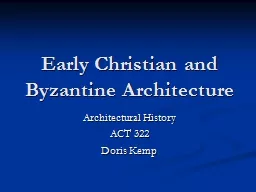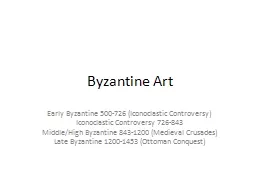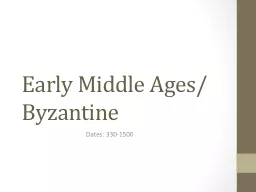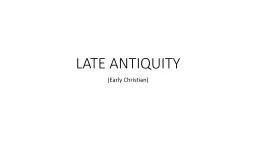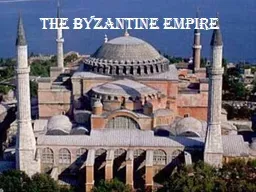PPT-Early Christian and Byzantine Architecture
Author : danika-pritchard | Published Date : 2017-12-22
Architectural History ACT 322 Doris Kemp Topics Early Christian Architecture Rome Structures Structures in the Holy Lands Milan Structures Ravenna Structures Structures
Presentation Embed Code
Download Presentation
Download Presentation The PPT/PDF document "Early Christian and Byzantine Architectu..." is the property of its rightful owner. Permission is granted to download and print the materials on this website for personal, non-commercial use only, and to display it on your personal computer provided you do not modify the materials and that you retain all copyright notices contained in the materials. By downloading content from our website, you accept the terms of this agreement.
Early Christian and Byzantine Architecture: Transcript
Download Rules Of Document
"Early Christian and Byzantine Architecture"The content belongs to its owner. You may download and print it for personal use, without modification, and keep all copyright notices. By downloading, you agree to these terms.
Related Documents

